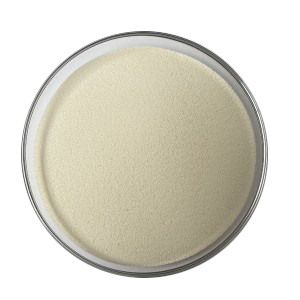Nekal BX, sodium butylnaphthalene sulfonate, has very inconsistent formulas. There are sodium butyl naphthalene sulfonate and isobutyl naphthalene sulfonate. There are two industrial production methods for Nekal BX:
(1) Naphthalene and the same weight of sulfuric acid sulfonation, the formation of α -naphthalene sulfonic acid, under intense stirring at the same time adding concentrated sulfuric acid and n-butanol, after separation, neutralization, evaporation.
② Naphthalene was mixed with n-butanol, and concentrated sulfuric acid was added. After neutralization and drying, the finished product was obtained. This product is white and light yellow powder, soluble in water. It is stable in hard water, salt, acid and weak alkaline solution, and white precipitate in concentrated caustic soda. It can be dissolved again after diluting with water. The product is anion type, water content is not more than 2%, iron content is not more than 0.01%, pH value of 1% aqueous solution 7 ~ 8.5. In addition to strong permeability, it also has emulsification, diffusion and foaming properties, poor cleaning ability, and poor suspension of dust.
This product can be widely used as penetrant in scouring, bleaching and dyeing processes. It can also be used as dye cosolvent, acid dye wool dyeing assistant, disperse dye wool dyeing assistant, polyamide blended fabric dyeing assistant, disperse dye polyester/cotton blended fabric dyeing assistant.

use
1, used as a penetrating agent in the textile printing and dyeing industry. It can also be used as detergent, dye aid, dispersant, wetting agent, insecticide, herbicide and emulsifier in synthetic rubber industry.
2. As penetrant and wetting agent, it can be used in various processes of textile printing and dyeing industry, such as enzyme desizing, wool carbonization, cashmere shrinking, chlorination, rayon silk processing. It can also be used as wetting agent in papermaking and lake industry. Adding 10% penetrant BX solution in organic pigment is beneficial to color paste modulation. Used as emulsifier in the preparation of rubber pulp.
3, the product has excellent permeability, wetting, emulsification, diffusion and foaming properties. In acid resistance, alkali resistance, hard water resistance, inorganic salt resistance, adding a small amount of salt can greatly increase the permeability. Widely used in various processes of textile printing and dyeing industry, mainly used as permeating agent and wetting agent, also can be used as detergent, dye aid, dispersant, insecticide and herbicide, etc.
Production methods
1, naphthalene and butanol, sulfuric acid by sulfonation condensation. Raw material consumption (kg/t) naphthalene 300 n-butanol 300 octanol 45 smoke sulfuric acid 840 sulfuric acid 450 caustic soda 190 no powder 100
2. Dissolve 426 parts of naphthalene in 478 parts of n-butanol, add 1 060 parts of concentrated sulfuric acid and then add 320 parts of fuming sulfuric acid under agitation. Gabi was slowly heated to 50-55 ℃ and kept for 6h. After standing, the underlying acid is released. The upper reaction solution is neutralized with alkali, and then bleached with sodium hypochlorite, sedimentation, filtration, spraying and drying to get the finished product.
Post time: May-20-2022

